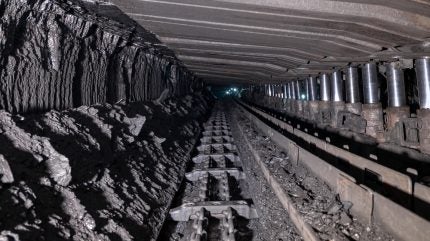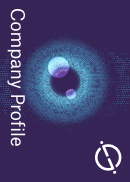
Research from the Institute for Energy Economics and Financial Analysis (IEEFA) has found that methane emissions from coal mining in Australia have been consistently underreported by 80%.
According to Mining Technology’s parent company GlobalData, Australia sits on 150.3 billion tonnes (bt) of coal – the world’s third-largest reserves – and there are 128 coal mines in the country. These operations have an uneasy relationship with the nation’s goal to reduce methane emissions by at least 30% from 2020 levels by 2030, under the Global Methane Pledge agreed at COP28.
Australia’s Department of Climate Change, Energy, the Environment and Water (DCCEEW) states that methane accounts for approximately 30% of total greenhouse gas (GHG) emissions in Australia.
As methane’s global warming potential is 21 times greater than that of carbon dioxide (CO2), coal miners are faced with the challenge of mitigating the release of methane from their operations.
Technologies such as catalytic oxidation and degasification systems, if commercialised, have the potential to bring coal mining further into the sustainable future Australia is striving for.
Methane plays an important role in questions surrounding how the Australian government can continue to balance its climate and energy transition plans while holding onto the coal industry and its export value of A$127bn ($85bn).
Access the most comprehensive Company Profiles on the market, powered by GlobalData. Save hours of research. Gain competitive edge.

Your download email will arrive shortly
We are confident about the unique quality of our Company Profiles. However, we want you to make the most beneficial decision for your business, so we offer a free sample that you can download by submitting the below form
By GlobalData
Emissions reporting and fugitive methane
Methane gas is emitted from surface, open cut and underground coal mines through extraction, seam fracturing and debris from the collapse of roofs and walls.
It can also be indirectly released through the storage and transportation of coal. These unintentional releases of methane are known as ‘fugitive’ emissions that go unreported.
Coal mine methane analyst Dr. Sabina Assan from energy think tank Ember Climate explains that “underground mines in Australia are required to report emissions but a lot are doing spot measurements, when you need continuous measurements. Surface mines use emission factors with their own estimates, leading to industry-wide underreporting”.
The Australian Government’s Safeguard Mechanism legislation under the National Greenhouse and Energy Reporting Act (2007) requires mining companies that meet a threshold of 25,000 tonnes or more of CO2equivalence (tCO2e) or 50,000tCO2e for corporate groups to report annually on their emissions.
In turn, the government publishes National Greenhouse Gas Inventory reports on the latest emissions. Its country-specific methodology uses national data and “external data sources” to determine growth rates and “in the absence of suitable data the method assumes that emissions remain unchanged”.
Estimating methane emissions from Australian coal mines
Comparing 2020-2022 data from the International Energy Agency (IEA) and the Australian Government’s quarterly updates, the IEEFA has uncovered major discrepancies in methane emissions reporting in Australia.
The IEA estimates that methane emissions from coal mining in Australia are approximately 81% higher than the national inventory data, corresponding to a discrepancy of about 28 million tonnes (mt) CO2e over 2020-2022.
The DCCEEW states that the ‘top-down’ inverse modelling techniques to test and raise the quality and robustness of emissions data, with a focus on methane […] “has been introduced in the Australian inventory and this remains a rare example of the use of these techniques in national greenhouse gas inventory systems.”
Such a mismatch in data is not restricted to Australia’s coal miners. The IEA says that inaccurate inventories and large differences between data based on measurement campaigns, scientific studies and emissions levels reported by official public bodies exist at “both global and local levels”.
The Minerals Council of Australia (MCA) tells Mining Technology: “Australia leads the world in the mandated reporting of coal mine fugitive emissions. None of the other six major seaborne coal exporters (Canada, Colombia, Indonesia, South Africa, Russia and the US) have the equivalent level of accuracy and coverage in reporting of coal mine greenhouse emissions as Australia. Nor do China or India, which produce over 60% of the world’s coal.”
Australia’s national inventory published for the first quarter of 2024 shows fugitive methane emissions fell by 1.7% to 0.8mt CO2e. The DCCEEW attributes this to a decline in underground coal production.
But looking ahead, GlobalData forecasts that the decline in Australia’s coal production will only be marginal, dropping 0.6% from 532.9mt in 2023 to 525.7mt in 2030. Relying solely on the closure of coal mines – of which 30 are planned for decommissioning by the end of the decade – will not be enough to address methane pollution, particularly as abandoned mines can still produce emissions.
Further action and investment are needed from both the industry and government. A report by Ember Climate finds that by focusing on coal mines alone, Australia could reduce its annual methane emissions by 18% by 2030, identifying this as “a special trump card up [Australia’s] sleeve”.
Mitigating technologies
At the forefront of testing methane emissions reduction is the expanding process of degasification and drainage boreholes.
At active mines, degasification systems employ vertical and/or horizontal wells to capture methane before or during mining, typically to protect miners from explosive hazards.
Assan explains that until “two or three years ago, we didn’t even think surface mines emitted methane. But there’s now an awareness that the pre-drainage of surface mines has a big impact on reducing overall emissions.”
In turn, developments beyond flaring captured methane have allowed for emissions avoidance. The gas can be reused for applications including coal drying, power generation, heating, boiler fuel and natural gas pipelines. Depending on the concentration and quantity, this can provide additional revenue for mining companies against the backdrop of competitive global coal export markets.
The Queensland Government, representing the largest coal producing state in Australia, has recognised the potential of recovered methane. In August it announced the first project under its A$520m ($349m) Low Emissions Investment Partnerships (LEIP) programme with coal mining company Stanmore Resources.
The 15-year project aims to capture coal seam methane at the South Walker Creek open cut metallurgical coal mine and transform it into electricity. The construction of a 20-megawatt coal seam gas-fired power station at the mine is expected to be completed by 2027.
With the successful execution of such projects, Australia could become a leader in providing reusable methane from coal mines, as the IEA predicts that widespread utilisation could produce approximately 40 terawatt-hours of electricity globally.
Combating ventilation air methane from coal mines
Australian mining research and innovation company Mining3 and not-for-profit investment fund Low Emission Technology Australia (LETA), while utilising their catalytic oxidation project, are pushing a vision of a low-methane mining.
The partners are investigating the performance of catalysts under different conditions to combat ventilation air methane (VAM), a system that dilutes underground gas through exhaust shafts.
Catalytic oxidation is expected to offer a solution for mines with lower levels of VAM which cannot abate emissions with combustion systems, a process known as regenerative thermal oxidation. Mining3 and LETA aim to commercialise the technology for widespread deployment across Australia.
Speaking to Mining Technology, LETA chief executive Mark McCallum confirms that the project “is in Phase One as we continue with the selection of catalyst from numerous suppliers for testing and finalise the catalyst test laboratory selection and test procedures”.

According to the MCA, VAM in Australian mines is typically well-below 1%. “The only currently available technologies to abate this involve high-temperature thermal systems of 1,000°C. The risk in this is that it provides an ignition source should an explosive mixture of gas be present in the ventilation stream which is rare but possible. This could cause an explosion in the mine itself with catastrophic consequences.
“Work in Australia to develop a safety system to prevent such an event has been undertaken and the coal industry is planning at demonstrating a number of the technologies safely,” says the organisation.
While such research is promising, Assan identifies a pattern that is holding industry-wide emissions abatement back. “There have been many pilot projects in Australia but none of them pass this stage as there is no economic incentive. New technologies that will be able to oxidize at lower temperatures and methane concentrate will make things cheaper, but there will still be a cost.”
According to Ember’s report, a cut of 370,000t of coal mine methane per year by 2030 using abatement technologies would cost an estimated A$99m ($66m), just 0.2% of the Australian coal industry’s A$51bn ($34bn) income in 2023.
McCallum affirms that associated costs for miners depends on a range of factors: “The emissions intensity of the mine, the cost and availability of technical solutions, and other emissions reduction options.
“The work that we are doing will continue to help inform the costs of these technologies and how they compare to other emissions reduction options, as we have allocated a total of nearly A$60m ($40m) in VAM abatement projects,” he says.
Ultimately, a combined force of commercial viability and regulatory enforcement is crucial to the successful mitigation of coal mine methane on a national level.
Methane’s role in the uncertain future of Australian coal mining
In late September, the Australian government approved the extension of three coal projects in New South Wales (NSW): Whitehaven Coal’s Narrabri mine, MACH Energy’s Mount Pleasant site, and Glencore and Yancoal’s Ashton-Ravensworth complex.
With the operating life of these coal mines now extending into the 2060s, the lifetime CO2 emissions are expected to be 1.357bt and the concurrent methane emissions 21 times greater.
Such approvals are sustained by the Environment Protection and Biodiversity Conservation Act (1999), under which coal mine proposals and extensions can be referred from state regulators to the federal environment department for consideration. The law examines ‘matters of national environmental significance’, but impact on climate change is not presently considered one of these matters.
However, methane emissions are becoming an increasingly important factor in coal mine proposals and approvals. Following concerns highlighted by planning officials in NSW over GHG emissions, Glencore and Yancoal have been ordered to reevaluate their joint proposal for the Hunter Valley Operations Continuation project. Assan confirms that this “is a first for Australia”.
Such tension between public and private interests in the coal mining sector would be eased by the successful commercialisation of promising emissions abatement technologies.
MCA confirms to Mining Technology that “Industry is continuing to work with government regulators and researchers to improve GHG measurement, reporting and abatement. It is important to remain open to potential improvements or enhancements from the use of new technologies and practices.”
For an international example, Australia can look to the European Union’s Methane Regulation which has established its first-ever rules for the continent’s coal industry to measure, monitor, report, verify and take action on reducing methane emissions.
“More awareness around methane emissions and the technologies available means that there is no good excuse to not mitigate them,” asserts Assan.




